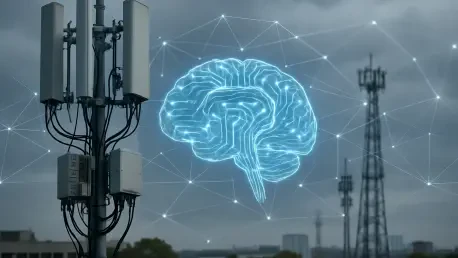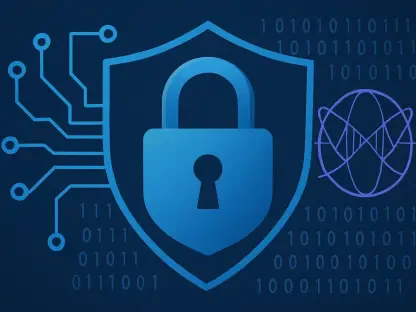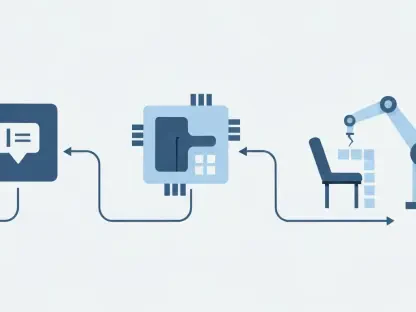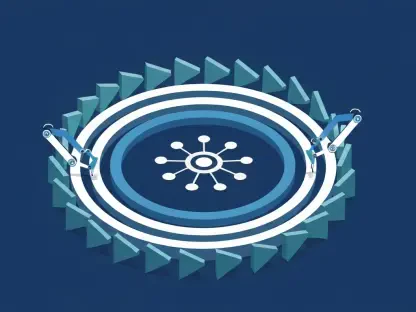In an era where seamless communication across the globe remains a persistent challenge, a groundbreaking development in satellite technology has emerged to bridge the gap. Imagine vast stretches of oceans, deserts, and remote wilderness—regions where traditional cellular networks fail to reach—suddenly becoming accessible for real-time data exchange. A European telecommunications operator, Sateliot, has achieved a historic milestone by completing the first-ever 5G IoT transmission using a standard commercial cellular device to a Low Earth Orbit (LEO) satellite constellation. This achievement signals a transformative shift in how connectivity can be extended to the farthest corners of the planet. By integrating terrestrial and satellite networks, this innovation promises to redefine global IoT services, making them accessible without the need for specialized hardware. The implications of this breakthrough touch industries, governments, and communities alike, setting the stage for a new era of universal communication.
Breaking New Ground in Satellite Technology
Pioneering 5G IoT Transmission
Sateliot’s recent success in transmitting a 5G IoT signal from a standard cellular device to its LEO satellite network marks a pivotal moment in telecommunications history. This test, conducted in collaboration with industry leaders like Nordic Semiconductor and Gatehouse Satcom, demonstrated full interoperability between terrestrial mobile infrastructure and space-based systems. Using Nordic Semiconductor’s nRF9151 low-power cellular IoT module, the experiment sent an end-to-end message through the satellite constellation, replicating the seamless roaming experience of ground-based networks. Compliant with the 5G NB-IoT Release 17 standard, this achievement confirms that existing IoT devices can connect to satellite networks without costly hardware modifications. Such compatibility reduces barriers to entry for businesses and organizations looking to leverage IoT solutions in remote areas, paving the way for broader adoption of this technology across various sectors globally.
This milestone goes beyond technical innovation by addressing a long-standing limitation in global connectivity—coverage gaps in terrestrial networks. With only about 20% of the planet currently served by traditional cellular infrastructure, vast regions remain disconnected from the digital world. Sateliot’s approach extends connectivity to the remaining 80%, encompassing oceans, deserts, and isolated terrains. Applications for this technology are diverse, ranging from logistics and agriculture to environmental monitoring and defense. By enabling standard IoT devices to communicate directly with satellites, the cost of deployment drops significantly, making it feasible for industries to monitor assets, track shipments, or manage resources in real time, even in the most inaccessible locations. This democratization of access could fundamentally alter how global operations are conducted, fostering efficiency and resilience.
Collaborative Innovation Driving Progress
The success of Sateliot’s 5G IoT transmission is a testament to the power of collaboration in advancing telecommunications technology. Partnering with Nordic Semiconductor, known for its energy-efficient IoT modules, and Gatehouse Satcom, a leader in satellite communication software, Sateliot achieved a unified solution that integrates seamlessly with existing infrastructure. Industry perspectives highlight the transformative potential of this development, with experts noting that the lack of harmonized global coverage has long hindered the growth of IoT and machine-to-machine (M2M) markets. By proving that low-power devices can operate within a satellite network, this breakthrough accelerates deployment across numerous use cases, from smart agriculture to disaster response systems. The collaborative effort underscores how standardized technology can drive progress, creating a scalable framework for future innovations in space-based connectivity.
Moreover, this achievement positions Europe as a frontrunner in next-generation communications, aligning with regional goals of competitiveness and strategic autonomy in satellite and 5G technologies. Sateliot’s leadership in this space not only showcases technical prowess but also reflects a broader vision of making connectivity a universal right. The ability to connect standard, low-cost IoT sensors directly from space addresses critical gaps, enabling real-time data collection in areas previously out of reach. This could revolutionize industries reliant on such data, fostering innovation in operational models and service delivery. As partnerships like these continue to evolve, the potential for further advancements in satellite IoT integration grows, promising even more robust solutions for global communication challenges in the years ahead.
Economic and Societal Impacts of Satellite IoT
Transforming Industries with Universal Coverage
The implications of Sateliot’s 5G IoT satellite technology extend far beyond technical feats, offering profound economic benefits for industries worldwide. With the ability to provide coverage to remote and underserved regions, businesses in sectors like logistics can now track assets across oceans, while agricultural operations can monitor crops in isolated areas using affordable IoT devices. Environmental monitoring efforts stand to gain immensely, as sensors deployed in untouched regions can transmit data on climate conditions or wildlife in real time. Additionally, critical infrastructure and defense applications benefit from resilient communication channels unaffected by geographic limitations. By lowering the cost of connectivity and eliminating the need for specialized equipment, this technology empowers small and large enterprises alike to harness IoT capabilities, driving efficiency, reducing operational risks, and unlocking new revenue streams.
Beyond industrial applications, the societal impact of universal IoT coverage cannot be overstated. Communities in remote areas, often cut off from digital services, could gain access to critical tools for education, healthcare, and emergency response through connected devices. Governments might leverage this technology to enhance disaster preparedness, using satellite-linked sensors to detect early warning signs in regions prone to natural calamities. The projected growth of Sateliot’s business, with contracts already worth €250 million across over 50 countries and an anticipated revenue of €1 billion by 2030, reflects strong market demand for these solutions. This financial traction validates the scalability of satellite-based IoT, suggesting that widespread adoption could reshape economic landscapes by bridging digital divides and fostering inclusive growth on a global scale.
Shaping a Connected Future
Looking back, Sateliot’s pioneering 5G IoT transmission via LEO satellites proved to be a monumental stride in overcoming the constraints of terrestrial infrastructure. This achievement not only validated the seamless integration of standard cellular devices with satellite networks but also highlighted Europe’s strategic role in advancing telecommunications. The strong market interest and collaborative efforts with industry partners underscored the viability of this technology to transform how industries and communities operated worldwide. Reflecting on this milestone, it became evident that the groundwork laid opened new pathways for innovation in connectivity.
Moving forward, stakeholders across sectors should prioritize investment in satellite IoT infrastructure to accelerate deployment in underserved regions. Policymakers might consider frameworks that encourage public-private partnerships to scale these solutions effectively. Meanwhile, industries could explore pilot projects to test satellite-enabled IoT applications tailored to their unique needs. As technology continues to evolve, staying ahead of regulatory and security challenges will be crucial to ensuring that the benefits of global connectivity are realized sustainably and equitably for all.









